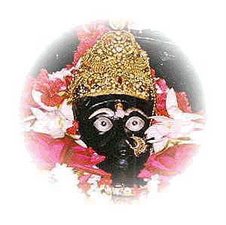Salwa Judum & international humanitarian law
Siddharth Varadarajan
India may not be a party to the Geneva Convention Additional Protocolsbut it has a legal obligation to protect civilians caught in thecross-fire between the Maoists and state-sponsored vigilantes inChhattisgarh.States have the right to wage war against one another and againstarmed insurgents who challenge them but it is a settled principle ofinternational humanitarian law that the methods of warfare employedmust at all times conform to the bounds of legality.
While allsocieties have traditionally grappled with what is and is notpermissible on the battlefield, the first systematic attempt tomodernise the laws of war was made at the international PeaceConference convened in The Hague in 1899. The Conventions of 1899 thatemerged were modest even by the standards of the time but thestatesmen and jurists who met there had the foresight to acknowledgethe limited nature of their initiative.
A preambular paragraph knownas the 'Martens Clause' was added unanimously to the Hague ConventionsII of 1899 noting that the legal protection combatants and civilianswere entitled to in a conflict could not be circumscribed by whatcountries were willing to accept either collectively or individuallyat any moment in time. "Until a more complete code of the laws of waris issued," the clause said, "the High Contracting Parties think itright to declare that in cases not included in the Regulations adoptedby them, populations and belligerents remain under the protection andempire of the principles of international law, as they result from theusages established between civilized nations, from the laws ofhumanity and the requirements of the public conscience."Neither the principles of international law nor the requirements ofpublic conscience have remained static since then.
Law may have alwayskept one step behind war but it has also tended to catch up each timethe actual conduct of warfare outraged the conscience of humanity. Theuse of poisonous gas and chemicals during World War I led to theprohibition of chemical and biological warfare in 1925. Themistreatment of wounded soldiers and sailors as well as prisoners ofwar by Nazi Germany and Imperial Japan during World War II led, in1949, to the revision of the First and Third Geneva Conventions aswell as the creation of the Second.
The wholesale targeting ofcivilians by all sides during the war also led to the Fourth GenevaConvention on the protection of civilians during hostilities.In 1977, with the experience of American military tactics during theVietnam war fresh in its mind, the international community adopted thetwo Protocols Additional to the Geneva Conventions. Protocol I relatesto the protection of victims of international armed conflict andexpands the protections provided by the Fourth Geneva Convention.Protocol II relates to the protection of victims of non-internationalarmed conflict. It builds upon an article found in all four GenevaConventions - Common Article 3 - prohibiting violence againstcivilians in conflicts "not of an international character" and expandsthe explicit prohibitions to include forcible displacement (Article17) as well as "acts or threats of violence, the primary purpose ofwhich is to spread terror among the civilian population" (Article 13).Adherence to the Geneva Conventions is now universal. However, despitethe fact that more than 160 states have ratified the 1977 protocols,India has preferred not to accede under the belief that non-adherenceto the protocols somehow frees it from the obligations enshrined within.
This belief is morally unsound, legally untenable andpolitically unwise. Today, the Martens Clause has become, in the wordsof Judge Weeramantry, formerly of the International Court of Justice,an "established and integral part of the corpus of current customaryinternational law" whose fundamental validity no state has repudiated.
When it comes to the protection of civilians in an armed conflict ofany kind, its meaning is clear: no state can cite national law or itsnon-adherence to an international convention as an excuse to derogatefrom its obligations.As a country beset with "non-international armed conflicts" of onekind or another, India sees Protocol II as a burden that would somehowconstrain the conduct of counter-insurgency operations. And yet, thereis nothing in the protocol that prohibits states from meeting thechallenge posed by armed insurgents. Indeed, Article 3 says there isno bar on governments using "all legitimate means, to maintain orre-establish law and order in the State or to defend the nationalunity and territorial integrity of the State." But the emphasis is on"legitimate means," as defined by national statute as well asinternational humanitarian law (IHL).
The only bar, thus, is onillegitimate means, especially those which victimise civilians. ForIndia to not formally enshrine this prohibition is politically unwisebecause the laws of war cut both ways. National adherence to theprotocol would also make insurgents such as the Maoists or variousgroups in Kashmir and the North-East formally liable for theirviolations of IHL, which are legion.It is also sometimes claimed that there are no "armed conflicts"occurring anywhere on the territory of India and hence the question ofacceding to the protocol does not arise. This assertion is false.
Prime Minister Manmohan Singh has repeatedly said that the naxalitemovement is the "biggest security threat" the country has faced since independence. Clearly, the threat posed by Maoists is not of "isolatedand sporadic acts of violence" but of "armed" insurgency, which is why the government has chosen to deploy 33 paramilitary force battalions against them and is considering the additional deployment of another79 battalions.Indeed, if ever there was a textbook case of the kind of conflict envisaged by Protocol II, the tragedy that is playing out inChhattisgarh is surely it. At the heart of this tragedy is thecriminal vigilantism of Salwa Judum (SJ), a government-sponsore dcounter-insurgent 'movement' launched in 2005 with the aim ofdefeating the Maoists by targeting villages believed to be'pro-naxalite. ' Tens of thousands of adivasis have been uprooted fromtheir villages and forcibly regrouped in new settlements or renderedinternally displaced.
According to official statistics, the totalnumber of civilian deaths in Chhattisgarh in 2005-2006 was 243 whilethe number of security personnel killed by the Maoists was 65. In thefirst three months of 2007, as many as 226 civilians were killed inthe State. By way of contrast, the official tally of killings by theMaoists in 2003 and 2004 - the years immediately preceding SJ - was 74and 83 respectively, including policemen. If the idea is to counternaxalite violence, the strategy is clearly not working.More troubling from the legal standpoint is the gross violation of IHLinvolved.
The political leadership in both Raipur and Delhi cannotevade responsibility on the specious plea that the movement is"spontaneous. " Even if 'spontaneity' were conceded, the Union andState governments are legally liable for the consequences. In anycase, there is a wealth of documentation establishing the close linksbetween the Chhattisgarh government and the SJ. A 2007 memo by theCollector of Dantewara lists the number of Salwa Judum meetings heldfrom June 2005 till January 2007, the villages which joined SJ andthose which have not. Coupled with an earlier document from 2005 -which laid out a 'work proposal' for the SJ including identifying'friendly' and 'enemy' villages, appointing Special Police Officers,dividing the entire area into clusters and permanently resettlingvillages next to police stations - the 2007 memo sounds like thereport of work successfully done.
The fate of village Vechapad is typical. According to accountsprovided by villagers to local journalists and activists, the Nagareserve battalion first came and burnt two houses. All the males inthe village then went to Mirtur camp, 10 km away, while the womenstayed behind. Slowly, the men fled in ones and twos back to thevillage. After that, the SJ repeatedly attacked the village. Sevenpeople were killed, most of them old or infirm. Joga refused to jointhe others in the camp around October 2005 because his sulphi tree wasin full sap, so the SJ came to find him. He ran towards the forest,but its members caught and killed him with an axe. In February 2007,Pandru Padami and his son Doga were killed by the SJ as they werecutting bamboo, while Sannu, another old man, was tied to a postoutside his house and axed, ostensibly because he gave food tonaxalites. Jagannath was killed by the naxalites for being aninformer, while Samlu Telam, also an old man, was killed by the SJ andhis body thrown into the jungle.
By using the Salwa Judum to target and terrorise so-called"pro-Maoist" villages such as Vechapad and scores of othersettlements, and forcibly relocating thousands of civilians, theGovernment of Chhattisgarh is guilty of violating both Article 13 and17 of Protocol II, quite apart from Article 19 of the IndianConstitution. Even if India is not a party to the protocols, CommonArticle 3 of the Geneva Conventions - to which it is a signatory -prohibits the use of violence against non-combatants in an internalconflict.
And then there is the Martens Clause. To come back to JudgeWeeramantry: "If, as is indisputably the case, the Martens Clausere presents a universally accepted principle of international law, itmeans that beyond the domain of express prohibitions, there lies thedomain of the general principles of humanitarian law ... A legal systembased on the theory that what is not expressly prohibited is permittedwould be a primitive system indeed, and international law hasprogressed far beyond this stage."The learned jurist was speaking - in his famous dissenting opinion tothe ICJ's 1996 advisory opinion - about the illegality of nuclearweapons despite the absence of an international convention on thesubject.
In the case of Salwa Judum, however, the bar is explicit. The targeting of civilians in an internal conflict violates the public conscience and is expressly prohibited by customary law. There is no way India can claim immunity from its sanctions.
source- cgnet
Subscribe to:
Post Comments (Atom)







No comments:
Post a Comment